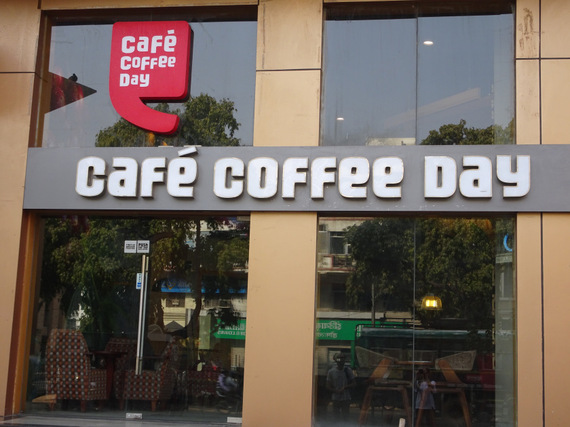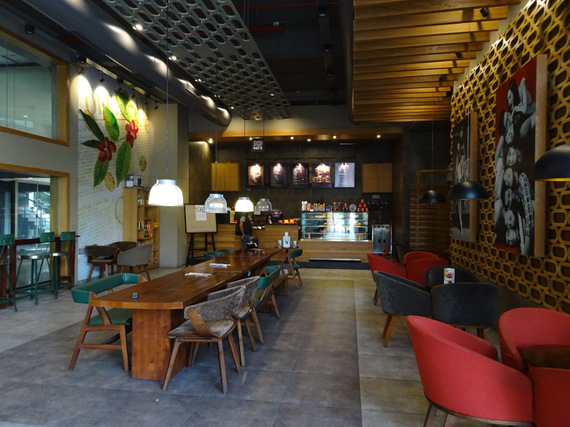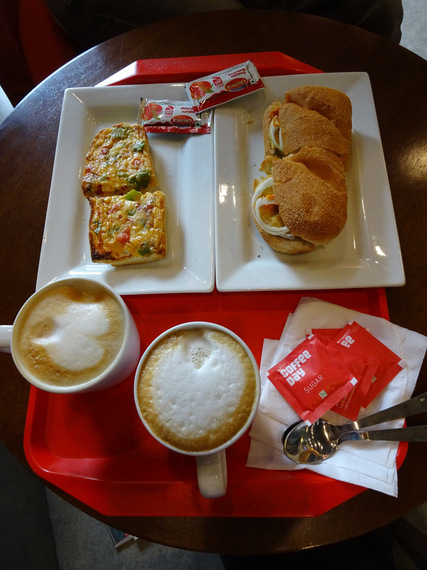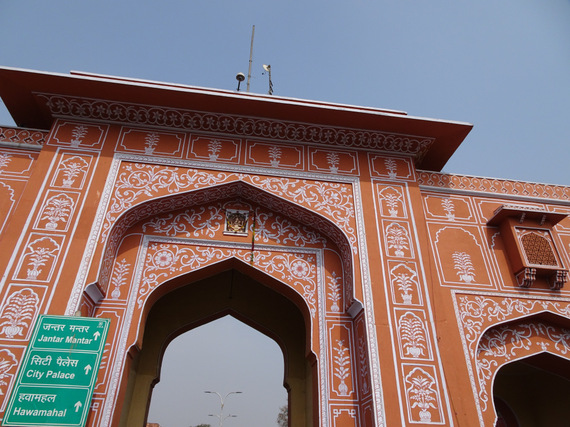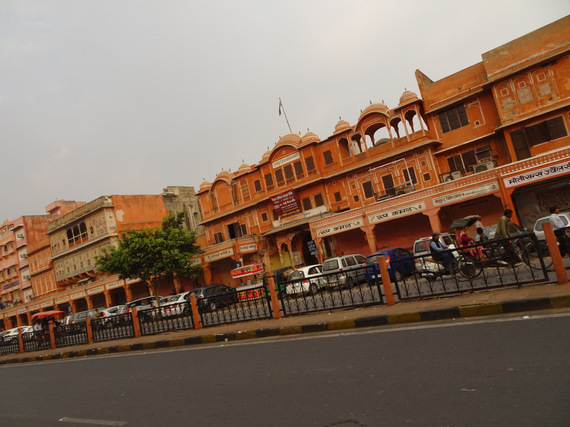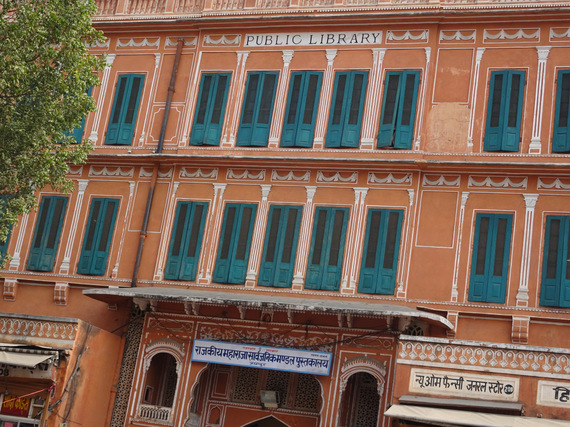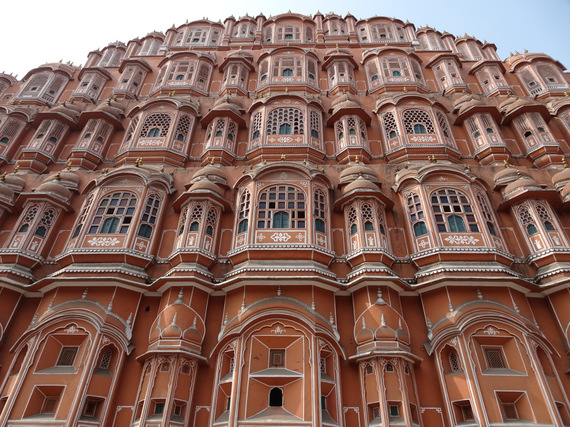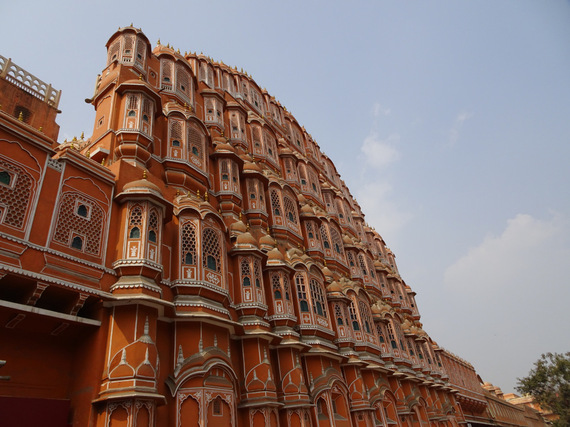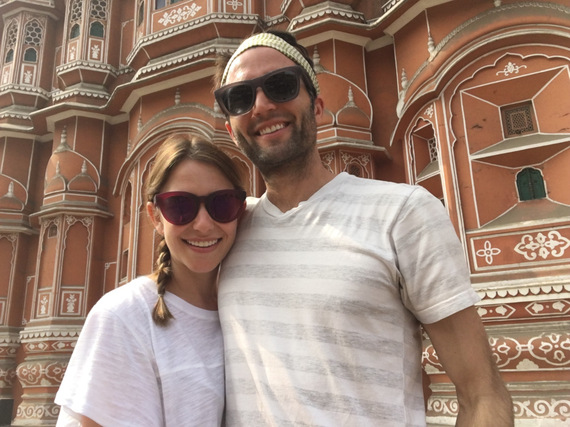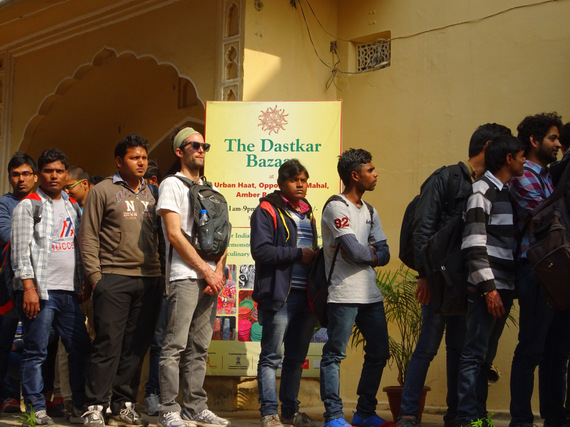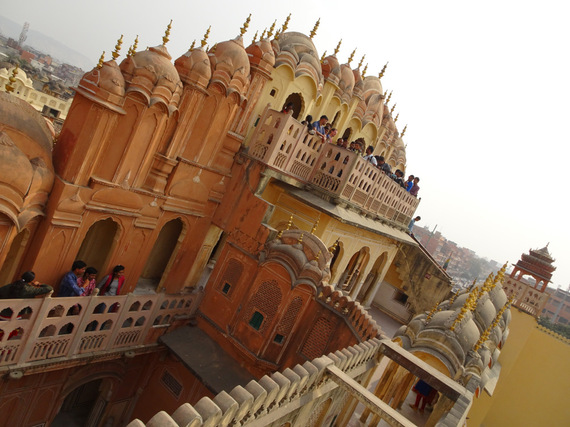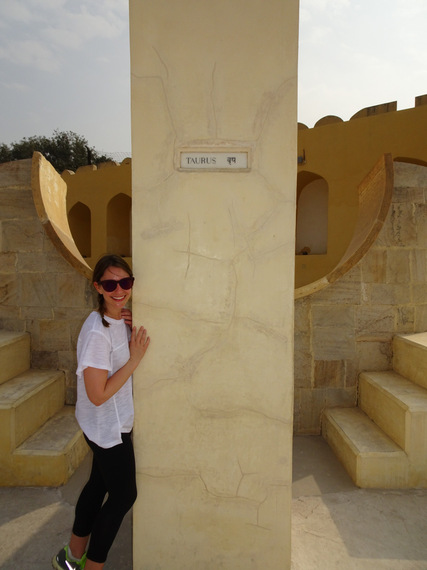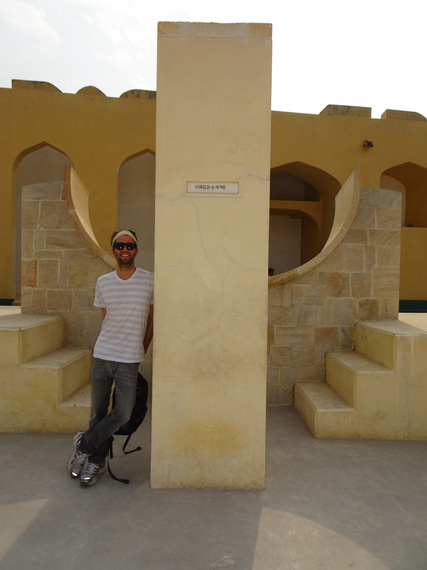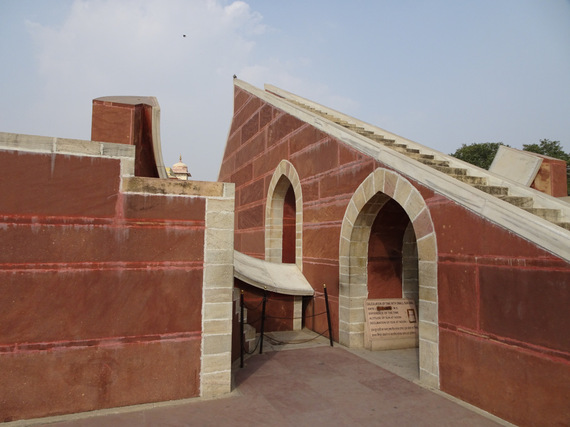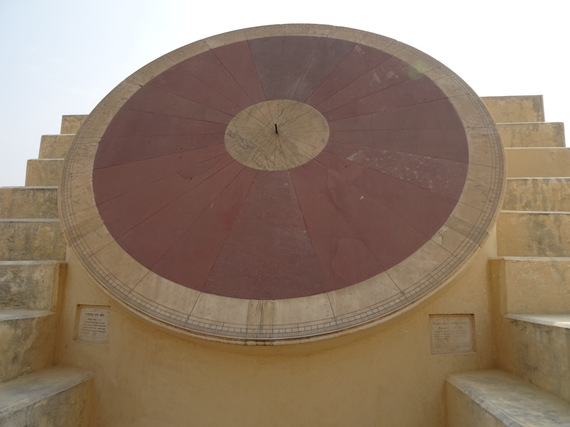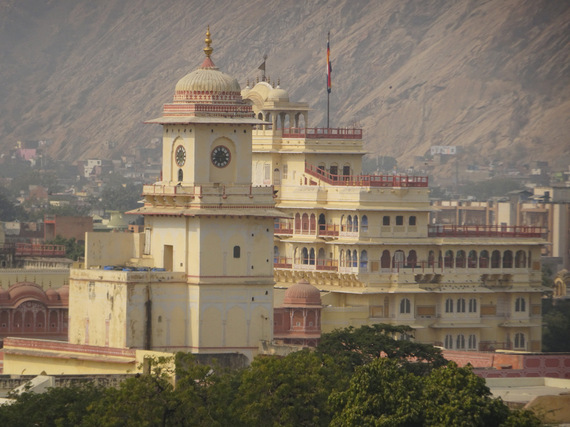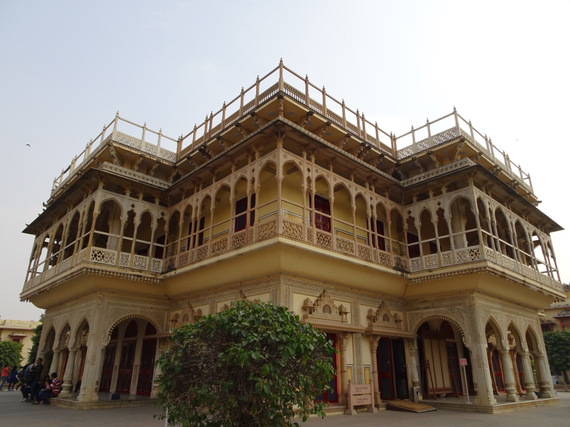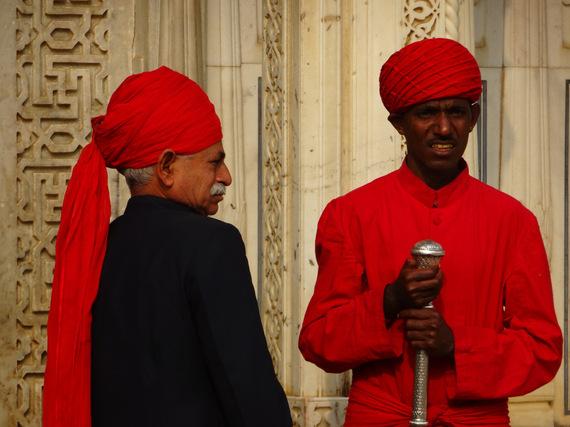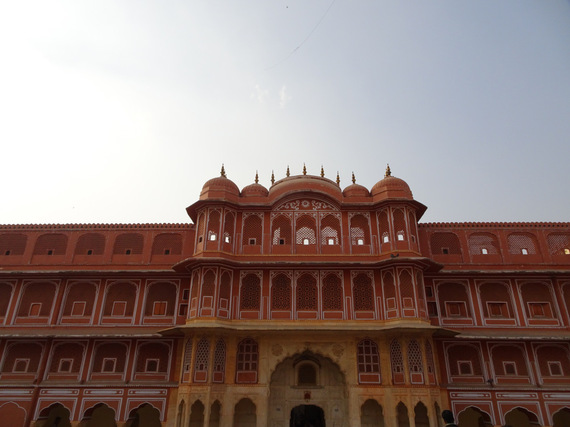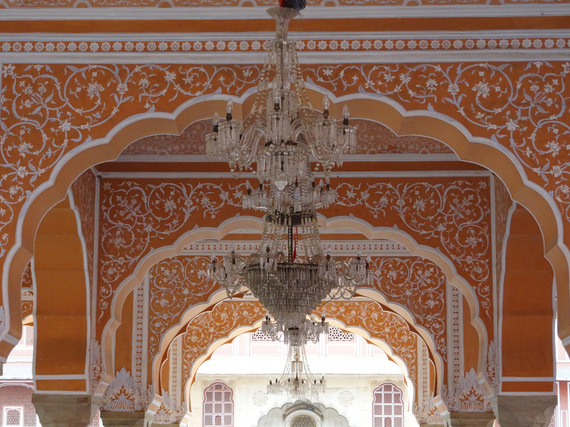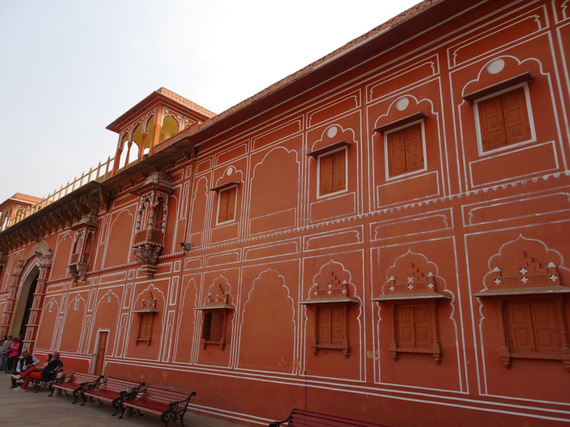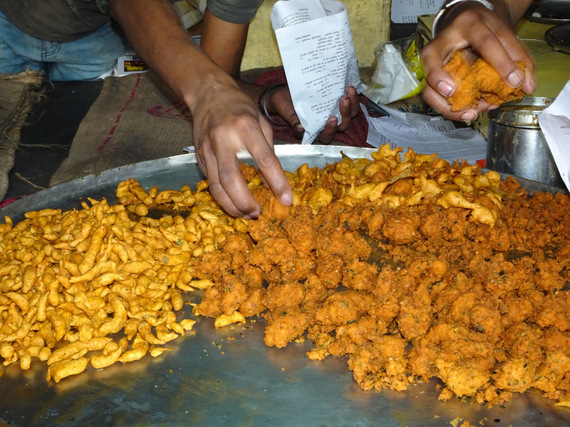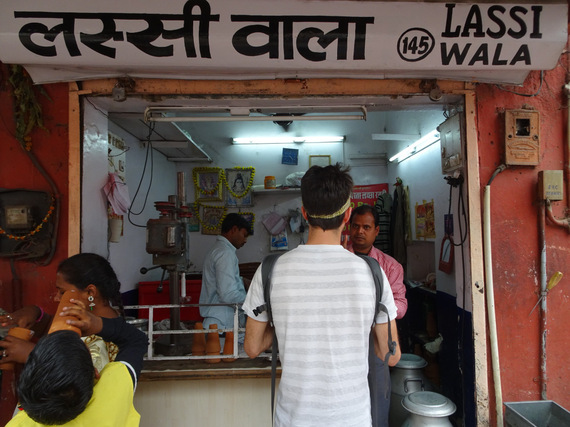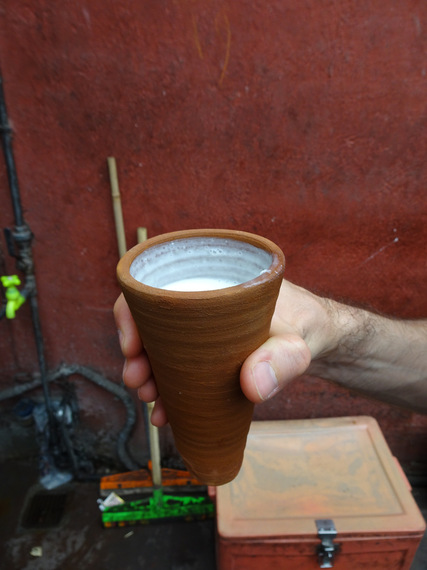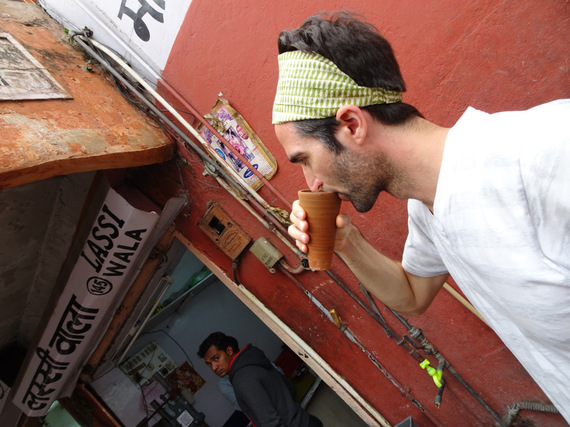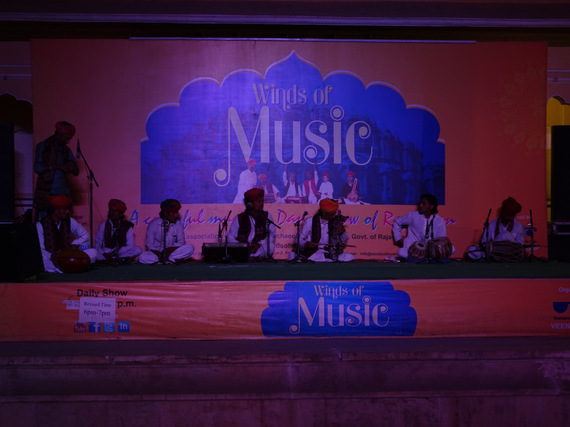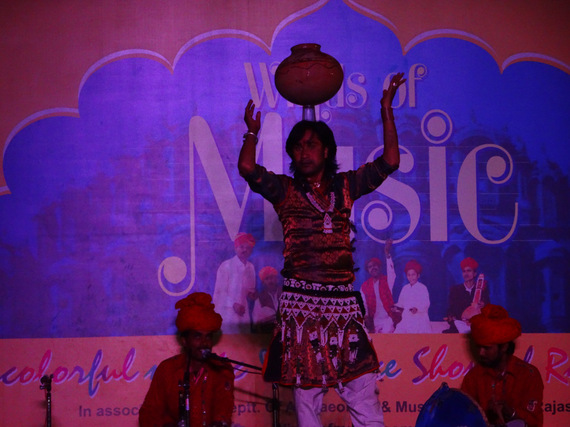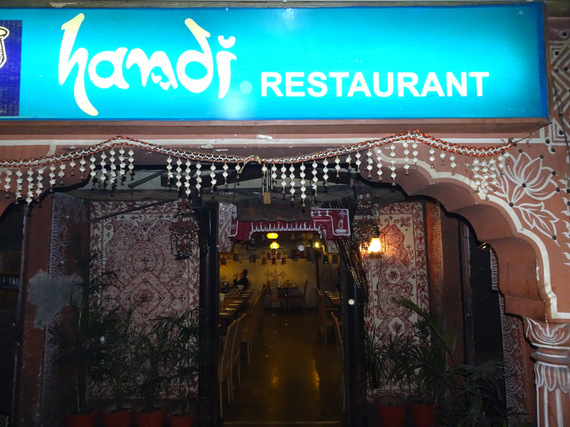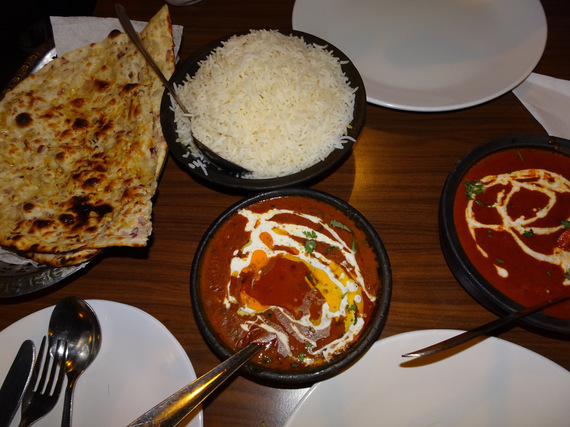The nice part to being in a city longer than some might suggest is that you get to take it slowly. We are so used to waking up at 6:00 a.m., being out all day and all night then not going to bed until 1:00 a.m. Well, that's how it's been on other trips in the past (talk about a dictatorship). But here in Jaipur, we have time. Time to sightsee, time to relax, time to wander, time to eat (always time to eat), time to do it all. This morning we lounged around our AirBnB until 11:30ish. I know, how lazy of us. We walked to a place called Cafe Coffee Day, which is a local coffee chain throughout India. Very modern look and feel inside.
After we sipped our cappuccino's and ate our interesting sandwiches, we took a 76 rupee ($1.13) Uber ride to the Old City, otherwise known as the Pink City. We drove through it yesterday with Mr. Bahadur but didn't actually stop. When you officially enter the Pink City, it warmly welcomes you with a large, very pink archway. From there on out, everything is pink. The library is pink, the buildings are pink, the apartments are pink.
First on our list was the Hawa Mahal, meaning "Palace of the Winds". This beautiful five-story palace was constructed in 1799 and built of red and pink sandstone. Considered as an embodiment of Rajputana architecture, the main highlight of Hawa Mahal is its pyramid shape and its 953 windows or 'Jharokhas' which are decorated with intricate designs. The intention behind the construction of the Mahal was to facilitate the royal women and provide them a view of everyday life through the windows, as they never appeared in public. This was one of the coolest structures I've ever seen. It is what truly makes Jaipur the Pink City. From a frontal view, it appears to be a massive complex. However, from a side view, you realize it's almost one dimensional.
We wanted to go inside as well so we walked around the corner to the entrance (which was actually the backside). Find what doesn't belong in this line...
Second on our list was Jantar Mantar, which is an astronomical observation site built in the early 18th century and supposedly the biggest stone observatory in the world. It includes a set of some 20 main fixed instruments, including one of the largest sun dials. They are monumental examples in masonry of known instruments but which in many cases have specific characteristics of their own. Designed for the observation of astronomical positions with the naked eye, they embody several architectural and instrumental innovations. This is the most significant, most comprehensive, and the best preserved of India's historic observatories. It is an expression of the astronomical skills and cosmological concepts of the court of a scholarly prince at the end of the Mughal period. Most of it, to be honest, went over our heads but it was still fascinating to read about each instrument and see them in person. Especially the instruments that were dedicated to our signs, Taurus and Virgo.
The last place was the City Palace, which is a complex comprising of courtyards, gardens and buildings right in the center of the Old City. As the name suggests, this place was occupied by the royal queen. Presently, it's serving the purpose of a museum, housing arms and weapons of the royal clan.
Here is a view from the Hawa Mahal...
One thing that stood out to me was the Pitam Niwas Chowk, an inner courtyard, that has four entry points; each having its own beauty and significance. The four gateways symbolize the four seasons and are dedicated to Hindu deities. Northeast Peacock Gate: Adorned with colorful designs of peacocks, the gate stands for autumn and is dedicated to Lord Vishnu. Southwest Lotus Gate: This doorway with running floral designs indicates summer season and is dedicated to Lord Shiva-Parvati. Northwest Green Gate: Also called as the Leheriya, this green colored gate paints a picture of spring season and is dedicated to Lord Ganesha. Rose Gate: Having beautiful flowers inscribed on it, the multihued doorway represents winter season and is dedicated to Goddess Devi.
Time for lunch. We had read about a street food place in the book that Tarpan and Saskia had lent us so we decided to put our brave hats on and try it. It was called Jagannath Sharma Pakodi Wale in Tripolia Bazaar. A hole-in-the-wall stall whose family has been feeding Jaipur for over a century with a blackened coal stove and traditional passed down recipes. For 20 rupees, or $.30, we got a few handfuls (literally, the guy put his hand in the pot and scooped it up) of pakora, which is basically Indian fritters made with gram flour and fried with different veggies. It was actually quite tasty. More like a snack then a meal but it did the job. What's so fascinating to me is that I would have never tried something like this back in LA. I was so set in my ways that I didn't feel the need to branch out. If ain't broke, don't fix it. But here, I am willing to try anything and everything (well, to a certain extent). I am no longer judging a book by its cover but welcoming it all with open arms.
From there, we walked about fifteen minutes to Lassilawa because Vinny was eager to see what the hype was all about. Lassiwala is a simple place that whips up fabulous, creamy lassis in clay cups. They started in Jaipur around 1944 and have spread like wildfire into multiple locations throughout India. A lassi is a popular, traditional drink that is a blend of yogurt, water, spices and sometimes, fruit. Traditional lassi is a savory drink, sometimes flavored with ground and roasted cumin. Sweet lassi, however, contains sugar or fruits, instead of spices. He was in heaven. I don't know if he was more enamored with the drink itself or the disposable clay cup it came in. Either way, he was happy. Gotta love a man who is so easy to please.
That night, we decided to attend a super duper touristy spectacular called Winds of Music at Hawa Mahal. We knew it was going to be cheesy but we were still interested in seeing what it was all about. And we were right. Cheesier than cheesy bread yet entertaining. It lasted about an hour and had five main acts. The first was a Rajasthani woman singing a traditional song, which was awful. Each act got better and better though. The next one was a group of men each playing a different Rajasthani instrument. The next were a group of women dancing a Rajasthani routine while the men played music in the background. There were a few more like this but the last one was what really caught my attention. It was a man who balanced a good size clay pot on his head with one, then two, then three, then four glass cups. Not only did he balance them, he danced and graciously moved around the stage. I mean, wow. Next, he did a fire act where he lit some sticks, drank some water, swallowed some fire, spit out some fire balls then eventually put out the fire with his mouth. I mean, wow again. Very impressive. I didn't get the best photos to showcase these acts but I hope these will do.
After the show, we walked to dinner at a place called Handi, which is the proud winner of the "Best North Indian Food Restaurant" award. It definitely lived up to its tantalizing food and mouth watering spices description. We actually got a chicken dish which was very enjoyable. Nice to have some meat again in my belly. Speaking of which, what day of the week do chickens hate most? Fry-day. HA!
That wraps up our naan-chalant day three in Jaipur. Hope you are enjoying yourself as much as we are!
